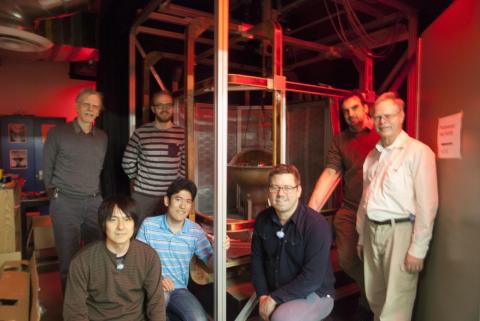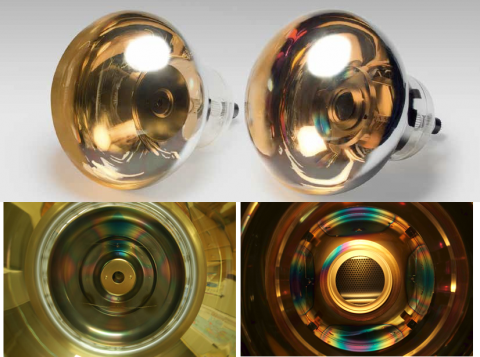

Neutrino hunter Mark Hartz is enjoying his unique joint appointment between TRIUMF and the Kavli Institute for the Physics and Mathematics of the Universe (Kavli IPMU) at the University of Tokyo. Not only will Mark be lending his technical expertise to the up-and-coming international neutrino experiment Hyper-Kamiokande (Hyper-K) in Japan, but he is also facilitating the circulation of talented researchers between Japan and TRIUMF.
Hyper-K follows in the footsteps of Super-Kamiokande (Super-K), which in 1998, first discovered evidence for neutrino mass and later successfully investigated the behaviour of neutrinos as they travel from one location to another, so-called neutrino oscillation. Hyper-K aims to build on these successes by revealing the full nature of neutrino masses.
Situated 1000m under a mountain near the town of Kamioka near the west coast of Japan, the Super-K detector catches hints of neutrinos as they travel through the earth. Only a few neutrinos may ever interact with the 50,000 tons of water inside the detector, but when they do, photomultiplier tubes (PMT, pictured) capture the light emitted. The PMTs are crucial as they capture the details of the interactions.
Hyper-K is proposed to be about 20 times larger than its predecessor, implying many more PMTs and much greater cost. Consequently, Mark is collaborating with researchers at UBC and TRIUMF to investigate the performance of alternate PMT technologies at the new PMT test facility at TRIUMF, which is jointly managed with UBC and York University. Mark and the University of Tokyo graduate student Yusuke Suda, along with Professor Yasuhiro Nishimura from the Institute of Cosmic Ray Research, recently visited the facility to improve upon PMT designs, including their optimal size for performance. The Institute for Particle and Nuclear Studies at KEK and the Institute for Cosmic Ray Research recently signed an MOU declaring an international, proto-collaboration for the Hyper-K experiment.
But the research doesn’t stop there. With more and more precise measurements coming from neutrino experiments, there is a need to better understand the precise physics of neutrino interactions with nuclei inside the detectors. Mark, TRIUMF researcher Akira Konaka and postdoc researcher Mark Scott, are collaborating with Stony Brook University Professor Mike Wilking (a former TRIUMF postdoc) on a project called nuPRISM, which promises a unique way to make these measurements to better understand neutrino interactions. A proposal for the nuPRISM project is currently being prepared and will be submitted to the Program Advisory Committee at J-PARC - the accelerator facility where the T2K neutrino beam is generated - this summer.
In his joint role, Mark has not only advanced the science goals of the neutrino projects, but he has also strengthened the collaboration between the institutions. Mark and fellow scientists at Kavli-IPMU recently received a “Brain Circulation” grant from Kavli-IPMU and the World Premier International Research Center Initiative to facilitate collaborative research, including scientist travel support, between Japan and Canada.
Both Kavli IPMU and TRIUMF are competing to keep Mark full-time after the original five-year joint appointment is fulfilled. And so, this begs the question: Where does Mark intend to make his home? One thing is for sure, Mark will continue to follow neutrino science everywhere it leads him. After all, neutrinos are everywhere.
–by Melissa M. Baluk, Communications Coordinator
Top photo: Back row left to right: Peter Vincent (TRIUMF), Tom Feusels (UBC), Thomas Lindner (TRIUMF). Front row left to right: Yasuhiro Nishimura (ICRR), Shimpei Tobayama (UBC), Mark Hartz (Kavli IPMU/TRIUMF), Wayne Faszer (TRIUMF)
Middle photo: "Developing ultrasensitive photodetectors for Hyper-Kamiokande. The top left image shows a new large-aperture high-sensitivity "hybrid" photodetector, which uses a semiconductor called an "avalanche diode" for signal amplification." Credit: Hyper-Kamiokande Collaboration
Bottom photo: Super-K facility with PMTs. Credit to Kamioka Observatory, ICRR (Institute for Cosmic Ray Research), The University of Tokyo
